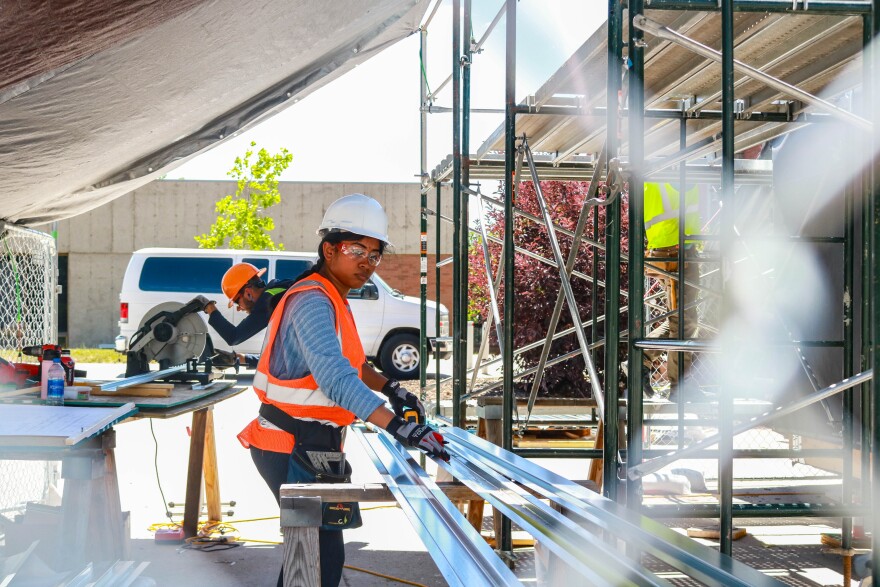University of Utah graduate students are working as fast as they can to finish a tiny home for The Other Side village, a project of The Other Side Academy. When it’s complete, the village will have 443 units, some of which will house unsheltered people.
It’s set to be located on the west side of Salt Lake near I-215 and adjacent to a former landfill.
The students are on week eight of the build, sweating through their white hard hats and neon orange and green vests as they build the home on the U’s campus.
Last year students submitted their proposed designs to a contest for the village. Now they’re getting hands-on experience building the winner.

The particular tiny home they’re working on is not a structure for unhoused people but will be used as a short-term rental, what The Other Side calls the “community inn,” and will be in a separate section of the site. The buildings are similar to the other homes but have less storage.
Priyanka Siriki, an international graduate student who has been helping with the build, sees these homes as “a real potential solution for homelessness.”
That’s also how many city leaders see this project. Salt Lake City Mayor Erin Mendenhall had wanted to have the village piloted by last winter, but it faced delays.
Back in October, the academy asked the city planning commission to rezone the area as a neighborhood. The commission recommended the city council approve the proposed change, but it hasn’t moved forward since.
Joseph Grenny, chair and founder of The Other Side Academy, said there are a lot of moving parts. He thought they’d be able to break ground by this spring, but right now there are two things they need from the city.
“First, we have to negotiate a lease. And for that to be done, the public benefit analysis has to be complete,” Grenny said.
That might take some time.
City spokesperson Blake Thomas said they’re still discussing the village’s development and analyzing its public benefits before going back to city council for approval.

“Since it's city-owned land, it's a complex process,” Grenny said. “There are a lot of stakeholders. I feel like it's making pretty steady progress.”





